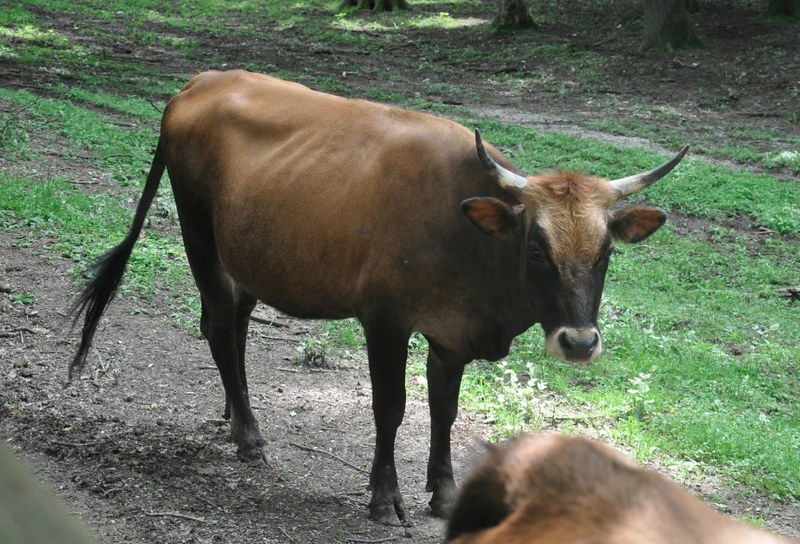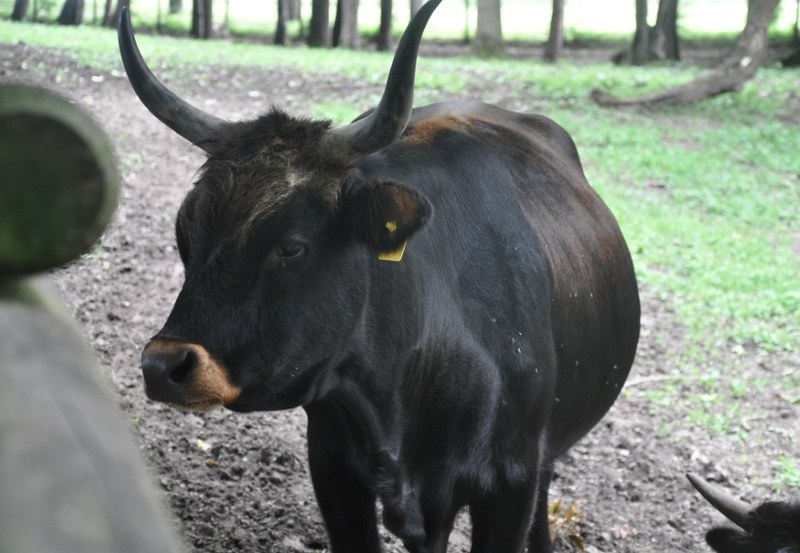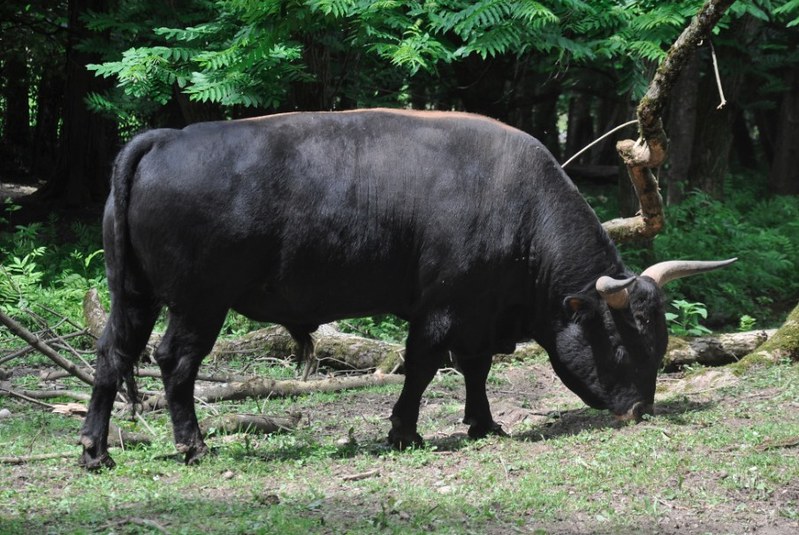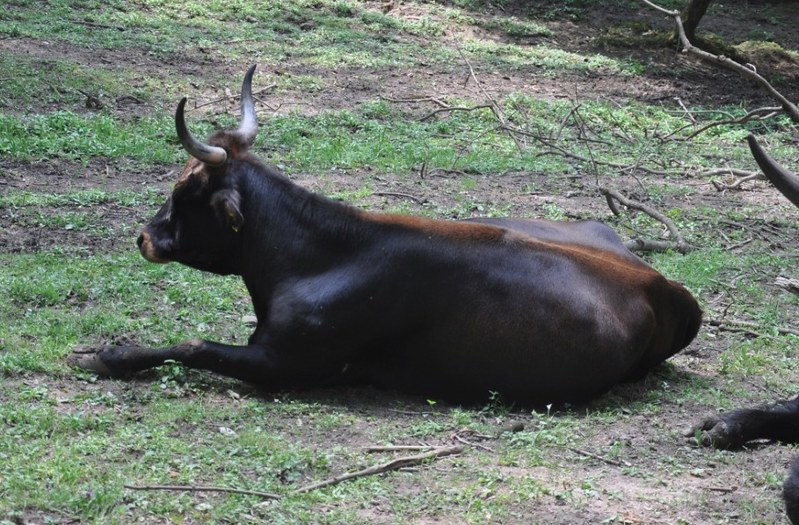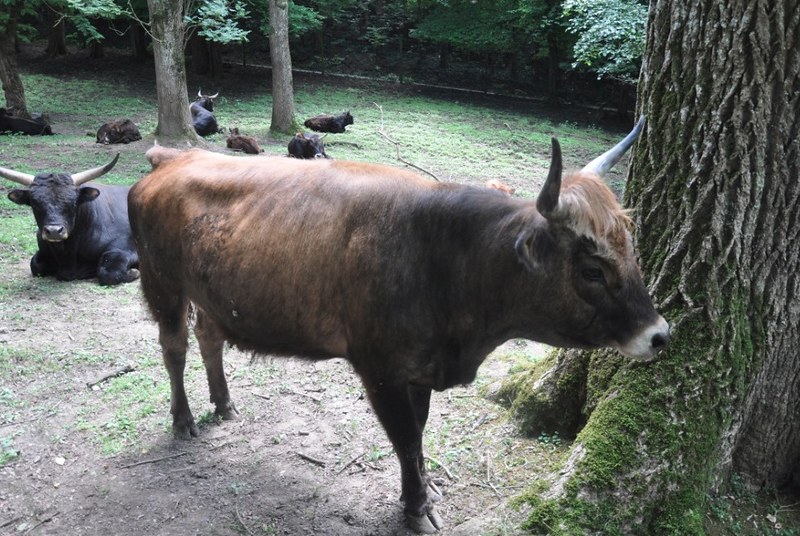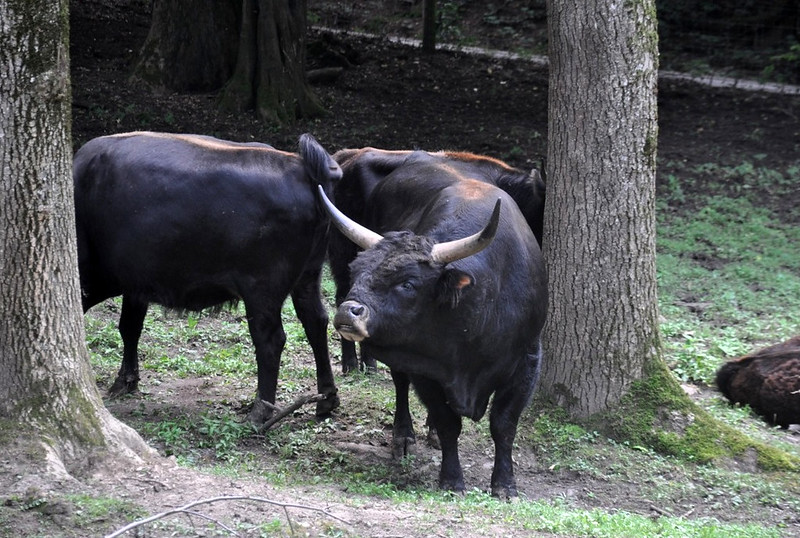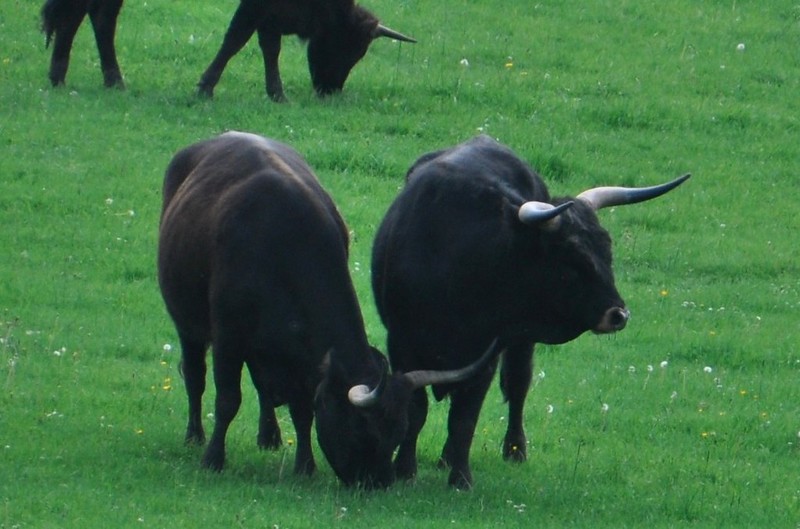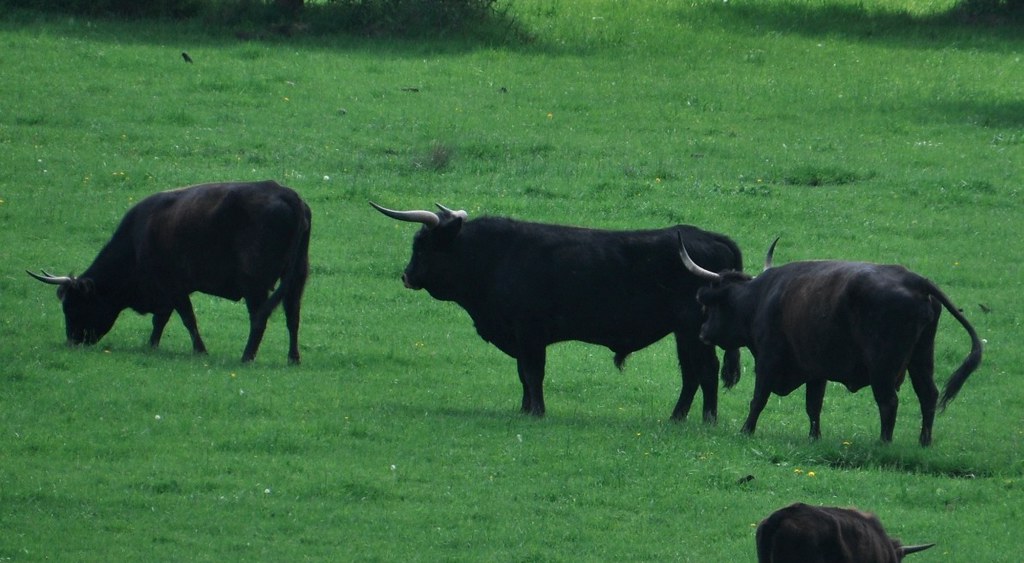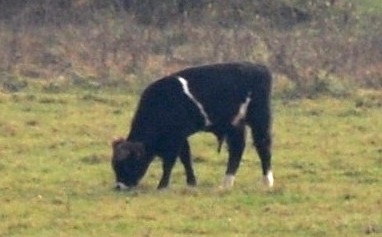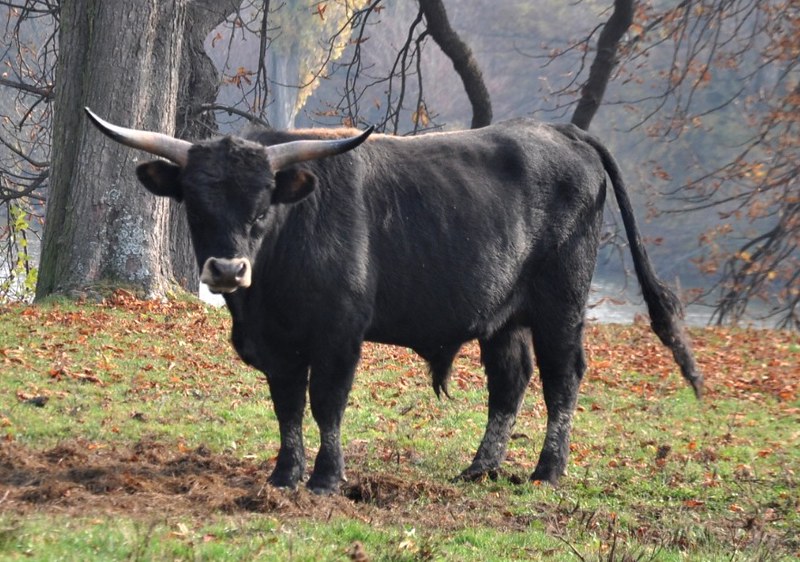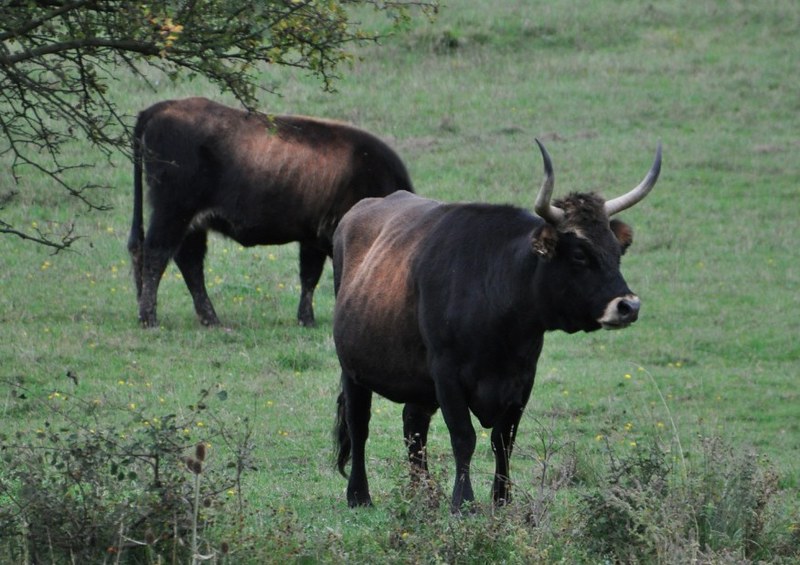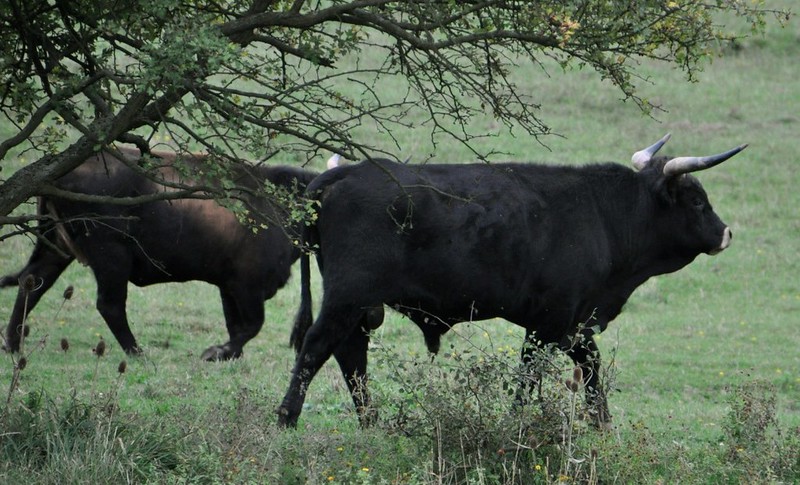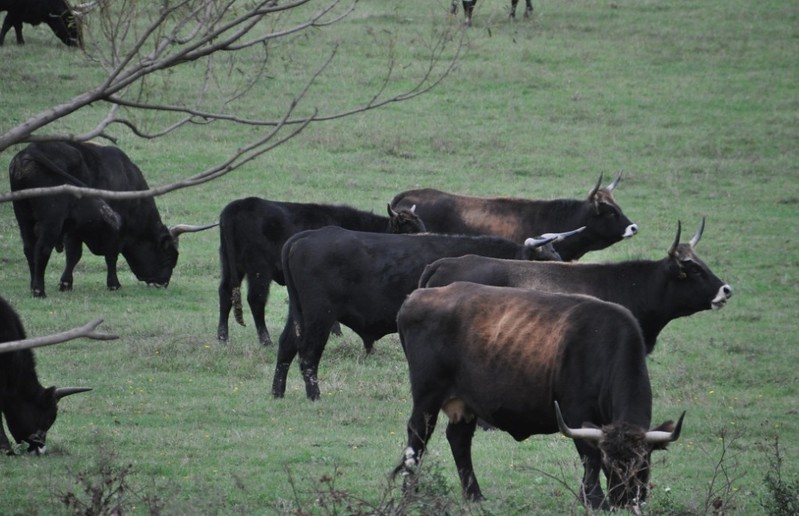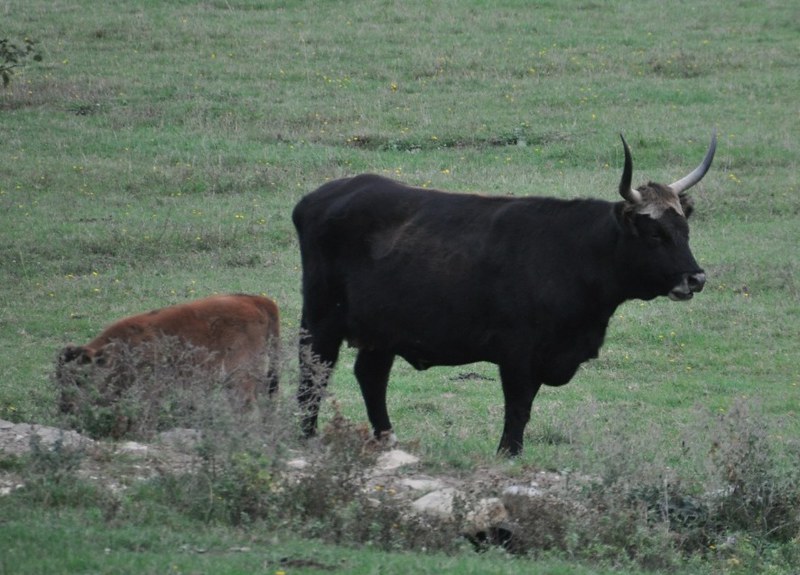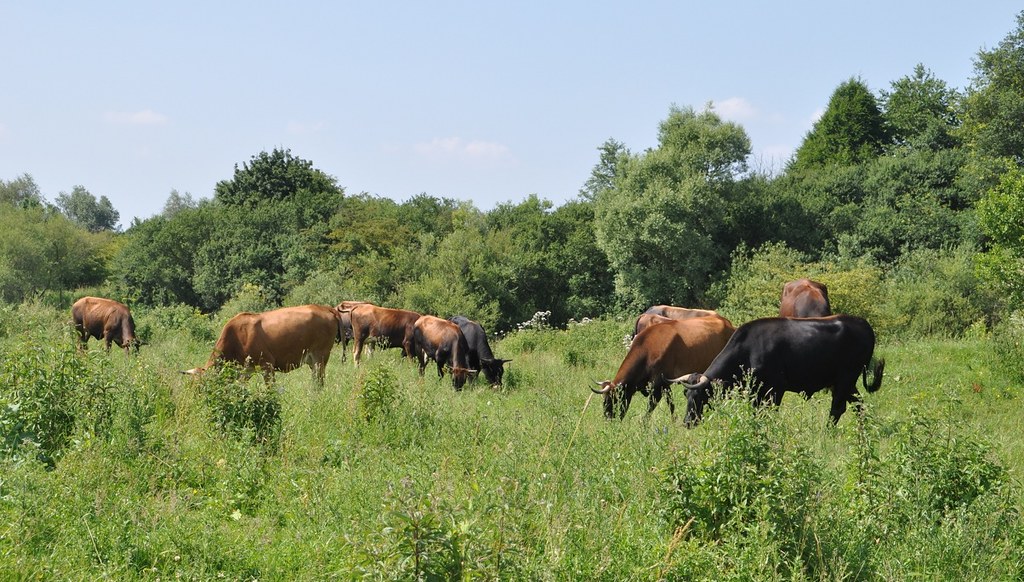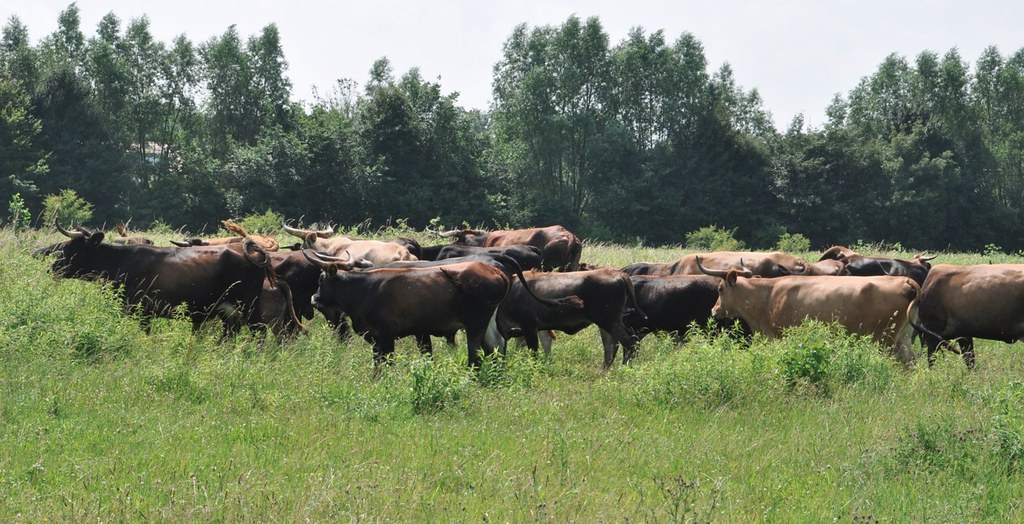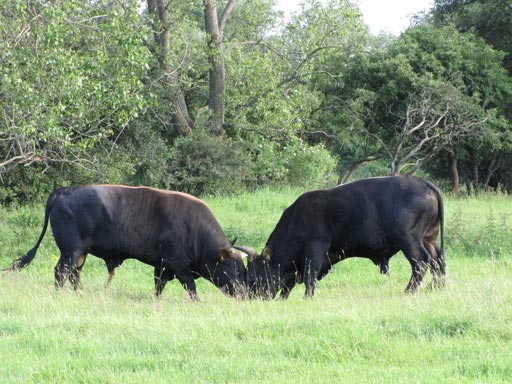Probably not unnoticed by followers of “aurochs rebreeding”,
a new aurochs project exists since last year. Henri Kerkdijk-Otten, formerly
manager of the Tauros Project, and his True Nature Foundation split of from the
Tauros Project and initiated the Uruz Project. Finally, I and Henri had the
time to do a little interview that provides you extra information on this most
recent aurochs project. Enjoy!
> - First
of all: Which cattle breeds is the Uruz Project going to use and in how far
will the set of breeds be different from that of the Tauros Project?
We want to diminish the amount of breeds and
combinations. There are multiple ways to Rome of course, but all the Pajuna,
Limia, Tudanca and Scottish Highland cattle are the cause of too much variation
and unwanted genes. At the same time in Portugal we will start with a selection
program with Barrosã and Maronesa cattle. In Spain and Portugal hopefully with
Toro de Lidia as well. That is a closed world unfortunately, but we do have
some contacts.
> - I am very happy to hear about Toro de
Lidia, their phenotype is simply too excellent (despite being small) to not be
used in breeding-back. So the breeds the Uruz Project is going to use are Texas
Longhorn, Barrosa, Chianina, Maronesa and Lidia?
We will start with two breeding lines: Chianina x Watussi and Sayaguesa x Maremmana/Hungarian grey. In Romania we will
probably start using Hungarian Grey influenced animals. For Romania we have a
farmer with cows that we can use to implant embryos in, that we will produce in
a lab. So that embryo will already be a F1 crossbred.
Barrosa, Maronesa and
Lidia will be selected within their breed.
 |
| The Uruz Project's Chianina cow at Kloster Lorsch. Useful animals: Tall and good body |
> - And what about the Maltese Ox, do you
still consider to use it? It seems like a "better Chianina" (as long
as they are the same size) since it has a less diluted coat, more aurochs-shaped
body and long and slender faces.
Yes, but difficult to
get our hands on. They never experience frosts and they are stabled all day
with little to no movement, so they are a little in the minus regarding those
aspects.
Regarding the Watussi
we use: they have gotten used to our climate. Farmers in the US and zoos in
Europe have them out in the open in winter without problems. They are tough
animals, can survive on poor forage and are overall resilient. And they bring
in large horns to compensate for the Chianina and Sayaguesa influence...
 |
| Young Watussi bull Ubutaha at Kloster Lorsch, he will cover the Chianina cows in the first years. He has wild type E+ as base colour, plus that weird wine-red Watussi modifer. |
> - How
many crossbred animals will be there in 2015?
No
telling. We are busy building up contacts, relationships, live herds, embryo
production and getting more funding.
> - How
many breeding locations will the Uruz project have, and where?
Fluid
thing. Several in the Netherlands (negotiating with national forestry,
municipalities and forest group right now), 2 in Germany, 2 in the Czech
Republic, 1 in Poland, 2 in the Ukraine, 1 to 3 in Romania, 3 or 4 in Portugal,
several in Spain. In Germany our contact person is having talks next week with
another municipality.
> - What are the selection criteria based
on, and for how many years are you going to select the animals?
Same
as Tauros project. The Aurochs hasn't changed, so criteria have stayed the
same.
We focus on phenotype a lot because we want to have a strong economic
foundation underneath every rewilding project. For that we need to have a
cattle breed that resembles the Aurochs as closely as possible. Safari-based
tourism and other revenue streams is that which attracts investors to our
foundation. Relying on Government funding is not a sustainable way of protecting
nature and wilderness.
> - Does the Uruz Project have all the
founding individuals of all the breeds to start crossbreeding already?
No,
we are building up and expanding. We are able to acquire all founder animal
(breeds) we need.
> - Something that I really miss in the
Tauros Program is a useful web presence that tells you how many crossbred
animals and in which combinations there are and photos of how they look like.
The data interested people are able to access is very scanty. Is the Uruz
Project going to provide us more information than that?
We
will keep people up to date via our facebook page. Tauros is lacking in that,
but they do not have the time to do that, so I find it understandable. Although
they recognize that some people want to see the results, they put all their
resources in the project itself, next to all the daily jobs everyone has. We do
have a closed-off Uruz project page that is for project members only. We are
not going to put a herd book only. No project does that as far as I know. Takes
too much time. So Facebook will be the communication tool we are going to use.
Maybe we will set up a separate Uruz facebook page.
> - I guess the Uruz Project will try to
release the cattle into the wild as far as possible when they are ready for.
How do you plan to overcome the legal problems of releasing domestic animals
into the wild and which reserves do you have in mind?
Cattle
have the legal status of kept animals in the European Union. We do have
contacts with Brussels to talk about this. There is an investigation going on
if and when some cattle (herds) can get the legal status of a wild animal. That
will take time (politics). In the meantime we will have to make do with what we
have; keep cattle in a semi-wild state and try to have as little government
control. In the Oostvaardersplassen animal carcasses have to be carried away,
but the area is too big to monitor all that.
Regarding
areas; in eastern Europe there are more possibilities. Problem with national
parks in Europe is that they mostly do not want areas to be fenced. If you do
not fence off areas, you will have to keep animal populations at an unnatural
low. See for instance the maximum of 25 Wisents on an area of about 5000
hectares in Germany. This is going nowhere. They animals are not able to shape
landscape and the population is too small to be viable. So therefore we opt to
set up private game reserves. So far, that option is working pretty well,
mostly in Spain. In Romania some national parks are more eager to fence off
large grazing areas.
>
- What is the current relationship with
the Tauros Project?
None.
>
- When will you use genome
editing?
These things take time. Long Now Foundation has
contacts for this. They want to do it, but have a lot on their mind. Then we
need to set up a procedure, identify what to do and how to do it. When the
genome is altered, it has to be put in stem-cells that are able to divide to
eggs or semen. Etcetera. For instance, it is feasible to knock the dilutor
genes off the Chianina genome, so the wildtype coloration surfaces again. And
that will save generations of recessive genes. A problem that plagues the Heck
cattle population. Lot to be done. In the meantime, we will start with good old
fashioned breeding.
>
- Since the genome of one aurochs is fully sequenced, why not doing genome
editing by directly inserting aurochs alleles instead of cattle alleles on loci
that are known to be different?
The genome sequencing was done by sequencing pieces 7
times. For a perfect genome or parts of a genome you need about 30 times. So
yes, we want to use Aurochs genome parts to be transplanted onto a cattle
genome, but we need better sequencing results. Professor Hofreiter, who just
set up that new ancient DNA lab at Potsdam University, want to do that, but
costs could go towards 500.000 euro. The Neanderthal genome took about 2 or 3
million. This is difficult to fund, because private investors do not fund this,
because there is not a clear revenue model underneath it. We are talking to the
son of Ted Turner, the wealthy FOX Media owner, who has millions of acres of
land in the US with lots of buffalo and other wildlife. But this is really
future talk. We might scale this down to start with. Hofreiter's aim is to
deliver Aurochs DNA that we can use for genome editing or even for cloning an
Aurochs. But that will take lots of more money => something for the future.
Still, it is worthwhile to start with this path.
> - As a last question and moving to horses,
I think the looks of those Exmoor x Konik crossbreeds looked very interesting.
Their bay-dun short-maned exterieur probably is representative for many
European wild horses, and the fact that one in three of them had standing manes
is really stunning. Why did they stop breeding them?
I think the Konik x Exmoor crossbreds of the
Taurus Foundation* looked cool in a sense. I don't know why the stopped
crossbreeding Exmoors and Koniks.
I wouldn't mind starting a crossbreeding
program of some sort. I don't want to use Przewalski through, since it has been
proven they broke off from the caballus
lineage some time ago.
* Stichting Taurus, a Dutch foundation running
grazing projects with cattle and horses and partner of the Tauros Project, no
connection to Taurus cattle; just to avoid confusions.



